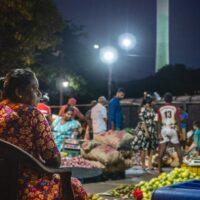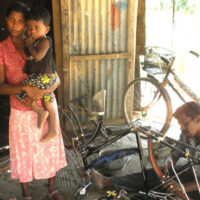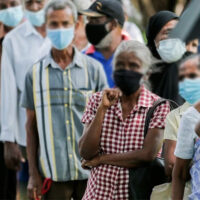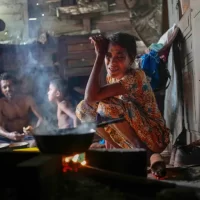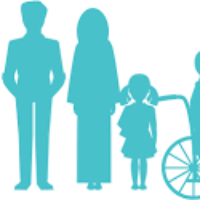In a Pickle: Ensuring Food Security During an Economic Crisis
by Thilani Kaushalya
Unlike some of the other development indicators in health and education, Sri Lanka has tended to struggle with respect to food security and nutrition. In 2019, in Sri Lanka, nearly one in eleven persons had experienced moderate or severe food insecurity. Malnutrition-related issues are also common among children, young adolescents, and pregnant women. Access to a nutritious diet continues to be a challenging task, especially for poor families. The COVID-19 pandemic and the economic crisis may have further exacerbated the existing inequalities in accessing a nutrient rich diet. Against this backdrop, understanding dietary characteristics and existing inequalities of the Sri Lankan households is imperative to design and implement national policies that are needed to ensure that there is adequate food for all, especially poor and the vulnerable. Based on an ongoing CEPA study, this article evaluates the food consumption patterns and inequalities in food consumption of Sri Lankan households.
Poor households eat less, while sectoral variations exist
In 2019, poor households did not consume the recommended minimum calories intake compared to non-poor households. According to the Medical Research Institute of Sri Lanka recommendations and the Department of Census and Statistics calculations, accounting for age and sex, the per capita calorie requirement is 2,030 kilocalories per day. On average, per capita dietary consumption for Sri Lanka was 2,120 kilocalories per day in 2019 with an excess of 90 kilocalories. However, disparities exist among poor households. At the national level, poor households consume 339 kilocalories less than the daily recommendation. The urban sector shows the highest gap in calorie intake with 630 kilocalories less (Figure 1A).
Figure 1. Per capita daily calorie consumption and dietary diversity by household expenditure decile

Note: Expenditure deciles represent groups of 10% of aggregate household expenditure. For example, the expenditure decile 1 describes the bottom 10% of the expenditure distribution.
Source: A. HIES 2019 Final Report (2022), Department of Census and Statistics; B. Authors calculations using HIES 2016 data.
Similarly, poor households tend to eat less diverse diets than other households. Based on an index developed using 12 major food groups (zero is minimum score and 12 is the maximum score), the poorest 10% of the households experienced 3 points (or nearly 40%) lesser in the dietary diversity index, compared to their counterparts in the richest 10% (Figure 1B). The food-based dietary guideline for Sri Lanka in 2011 recommends eating a variety of food every day. Dietary diversity is important for people to get enough macro and micronutrients from their food. Nutritional deficiencies increase susceptibility to various diseases and is responsible for lower adult work productivity. The consumption of cereal, vegetables, pulses, and fish (including dried fish) were nearly the same across all expenditure groups. However, the consumption of fruits, meat, eggs, and milk showed high inequality. For example, only 37% of poorest 10% of households consumed one or more fruit item for a given week while 84% of households did so in the richest 10% of households. Interestingly, nearly 40% of richest households did not consume any type of meat or eggs for a given week (Figure 2). Limited consumption of food items like meat and eggs among richest households is likely to be influenced by religious or cultural factors.
Figure 2. No consumption of meat, egg, milk, and fruits by expenditure decile

Note: Expenditure deciles represent groups of 10% of aggregate household expenditure.
Source: Authors calculations using HIES 2016 data.
Poor families spend a higher share of their food budget on prepared food
Low-income households spend a high share of their food budget on prepared food or in other words food that they consume away from home. The poorest 10% of households spend about 16% of their food budget on food away from home while their richest counterparts spend 12% (Figure 3). Prepared food is generally considered unhealthy due to high amounts of calories with sodium and fats. Evidence from other countries shows that eating from outside, especially fast food is positively associated with working extended hours, living in a city, and belonging to minority ethnic groups. In Sri Lanka too, the urban poor spends 31% of their food budget on prepared food while for rural poor this figure stands at 15%.
Figure 3. Household food budget share on prepared food by sector and expenditure decile

Note: Expenditure deciles represent groups of 10 % of aggregate household expenditure.
Source: Authors calculations using HIES 2016 data.
Among urban poor a higher share of calories from imported food items
All households across the expenditure spectrums, from rich to poor, consumed nearly 22% of calories from imported food items. Low-income households in the urban sector consumed relatively high share of their calories from imported food items (Figure 4). This is likely due to relatively high consumption of food prepared from wheat flour and pulses such as dhal. Irrespective of the expenditure decile, households in the estate sector consumed about 30% of their calories from imported food.
Figure 4. Share of calories from imported food by sector and expenditure decile

Note: Expenditure deciles represent groups of 10% of aggregate household expenditure.
Source: Wijesinghe and Kaushalya (2021) calculated using HIES 2016 and FAOSTAT food balances data 2016
Current economic crisis is likely to increase existing nutrition inequalities
Even before the recent food price hikes, healthy, nutritious diets were generally unaffordable for people from low-income families. Today, the starting point is already skewed with many barriers to reducing these existing inequalities in accessing a healthy, nutritious diet. The present conditions of high food inflation, reduction in domestic agricultural output, increase in fertilizer price in the world market, trade restrictions (domestic import controls and international export controls), and the current foreign currency and debt crisis are further barriers, among others. It’s likely that those barriers will disproportionately affect lower income families, and other vulnerable groups in the society. Recent anecdotes from various parts of the country provide evidence for skipped meals, intra-household inequality in access to food, and reduced protein and vegetable intake in their meals. The severity of the food crisis is such that it requires a set of immediate, medium-term and long-term solutions to mitigate the impacts of the current economic crisis on poor and vulnerable populations to ensure food security and improve nutrition of all people.
Immediately, it’s vital to control the shortages of some essential food items in the market. Immediate interventions require support from the international community and development partners to provide food aid. By doing so, Sri Lanka could strengthen existing safety net programs such as school mid-day meal programs, Thriposha program and the Samurdhi poverty alleviation program to ensure food security. To mitigate the inflation risk, guarantee the cash value of an identified basket of food instead of flat value of cash vouchers. Furthermore, the government could use foreign financial assistance to prioritize and subsidize the importation of essential food items such as rice, wheat flour, dhal, and milk products. However, rising food prices in the world market and other countries banning export of food items until end of year 2022 (e.g. Russia, Ukraine, and India banned wheat exports and Indonesia banned palm oil and palm kernel exports) make it more challenging to access essential food via international markets.
Medium-term, domestic agricultural output needs to be increased by cultivating crops with shorter growing cycle (e.g. cultivating sweet potato instead of cassava) and high caloric and nutrient contents. The lack of chemical fertilizer in the domestic market and high fertilizer prices in the world market are likely to further reduce domestic agricultural output. Therefore, crop cultivars which require lesser fertilizer and chemicals and integrated pest management practices need to be promoted via effective agricultural extension programmes. Home gardening will also ensure food security to some extent, especially in the rural and estate sectors of the country. Community gardens may also be helpful for urban areas with limited access to land.
Long-term, Sri Lanka needs to achieve macro-economic stability and make a concerted effort to implementing, not just developing multi-sectoral action plans on nutrition, to ensure food and nutrition security for all as required.
Note: For this article, poor and rich are defined as those who belong to the bottom 10% of the expenditure distribution and the top 10% of the expenditure distribution, respectively. For Figure 1A, poor are defined using the standard definition used by the Department of Census and Statistics.
A policy brief is forthcoming.
Disclaimer: The views expressed in this article are those of the author and do not necessarily reflect the views and policies of CEPA.
